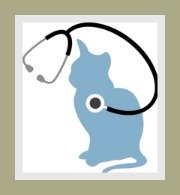Feline Diabetes Symptoms
Signs Your Cat is Sick
This chapter on feline diabetes symptoms will assist you, the cat owner, in identifying cat diabetes in the early stages and enable you to seek veterinary advice and treatment.
The symptoms of cat diabetes are not always unique to diabetes and may be symptomatic of other cat diseases.
For this reason, it is important that
if your cat is presenting with any of these symptoms that it is taken to a
veterinary practitioner for a thorough examination and tests
to confirm diagnosis.
The
types and causes of sugar diabetes (aka diabetes mellitus) are
discussed in the chapter on feline diabetes. Essentially, the condition
results from the cats' inability to use glucose effectively and this
results in dangerously high blood sugar levels.
early symptoms of cat diabetes
polyuria
This is described as passing frequent and large amounts of urine each day.
If you have an indoor cat, this will be quickly and easily detected as the cat litter box will need more frequent changing.
In the case of an outdoor cat, polyuria may go undetected.
polydipsia
This is a condition where the cat displays excessive thirst and drinks increased amounts of water at very regular intervals.
Polydipsia is usually accompanied by polyuria.
advanced stage symptoms
As
the disease progresses cat diabetes symptoms include:
- Decreased or increased appetite.
- Kitty may either be ravenous or totally off its food.
- Sudden weight loss
- Vomiting
- Dehydration
- Weakness and lethargy
- Poor coat and skin condition
- Bacterial infections become more common
- Diabetic neuropathy which results in the cats back
legs becoming progressively weaker and developing what is called a
plantigrade stance, i.e. instead of standing on its toes it stands on
its hocks.
- As your cat becomes ketotic, its breath may have an acetone odor
- Rapid breathing
- Finally, if untreated, your cat will go into coma and die.
It is important to recognize the early feline diabetes symptoms (i.e. weight loss, polyuria and polydipsia) and to seek advice from your veterinarian.
Feline diabetes mellitus is treatable - prompt and early diagnosis of the condition may result in successful management.
If the disease is allowed to progress the prognosis is less
favorable.
diagnosing feline diabetes
The veterinarian will take a full medical history from you, the pet owner and then perform a thorough physical examination of your cat.
The diagnosis is confirmed using the results of laboratory tests of both blood and urine.
In a healthy cat the normal blood glucose is 80 - 120 mg/dl. In a cat presenting with diabetes, the blood glucose levels will be greater than 200 mg/dl.
The veterinarian will initially use a glucometer (developed for felines and not humans) to establish the blood glucose readings.

glucometer for testing blood sugar
To confirm these finding a sample of blood may also be sent to a laboratory for confirmation.
As stress may cause an increase in blood sugar, the test may need to be repeated to confirm the condition.
The veterinarian is likely to do a fasting blood glucose test. Essentially this means that your cat will not be fed for 12 hours prior to the blood test being performed.
The veterinarian will also perform a urine test to check for glucose levels.
Urine is tested because if your cat has high levels of blood glucose, the glucose will be filtered by the kidneys and then be passed via the urine.
These diagnostic blood and urine tests combined with feline diabetes symptoms will confirm that your cat is suffering from diabetes and not other cat diseases with similar symptoms.
next steps
On confirmation of the disease, the veterinary team will discuss all the options regarding feline diabetes treatment, management and prognosis.
Top of Feline Diabetes Symptoms
Return to Feline Diabetes
search our site
please like us
share our site
recommend on google
favorite pages





